A garage door safety cable is a simple but incredibly important fail-safe, especially if your system uses extension springs. These are the thin steel cables you’ll see threaded right through the middle of the springs. Think of them as the seatbelt for your garage door’s high-tension system—you hope you never need them, but you’ll be glad they’re there if you do.
The Critical Role of Your Garage Door Safety Cables
It’s easy to overlook the safety cable, but it's a non-negotiable part of any secure garage door setup. Its main job isn't lifting the door; it's there to contain the explosive energy that gets released when a spring inevitably breaks.
Without this simple cable, a snapped spring can become a high-velocity projectile, capable of causing serious injury or major property damage.
Just imagine the massive tension those extension springs are under to lift a door that can weigh hundreds of pounds. When that tension is released in a split second, the force is incredible. Safety cables are engineered to absorb that kinetic energy, keeping the broken spring pieces contained right where they are.
Why This Component Is So Important
The need for a safety cable comes down to basic physics and risk management. Garage door springs have a limited lifespan, usually measured in cycles (one cycle is one opening and one closing). Metal fatigue is a guarantee, and eventually, they will fail.
Properly installed safety cables offer a few key benefits:
- Injury Prevention: This is the big one. It protects you, your family, or anyone else in the garage from getting hit by a flying spring.
- Property Protection: A snapped spring can easily damage your car, stored items, or even punch a hole in the wall. The cable stops that from happening.
- Contained Failure: By keeping the spring in one place, the cable helps prevent further damage to the garage door tracks, rollers, or the door itself.
A broken garage door spring can release its stored energy with enough force to cause significant harm. A safety cable is the simple, mechanical feature designed specifically to mitigate this exact danger.
Understanding this vital role makes it clear why you should never operate a door with extension springs that don''t have safety cables. It’s a fundamental layer of protection. Of course, recognizing the signs of wear on both your springs and cables is just as important. Knowing how regular inspections reduce the need for garage door spring repair can help you spot trouble long before it leads to a dangerous failure. This proactive approach is a cornerstone of smart home maintenance.
How Safety Cables Prevent Catastrophic Failure
To really get why safety cables are so crucial, you have to understand what’s happening with your extension springs. The safety cable garage door system isn't about lifting the door—that's a different set of cables. Instead, these are dedicated retaining lines with one job: to be your last line of defense. They run straight through the center of the springs and are bolted securely to the door's frame.
Think of your garage door's extension spring like a massive, tightly wound rubber band. Every time the door closes, that spring stretches out, storing an incredible amount of raw potential energy. That stored force is what helps lift the door's several hundred pounds, making it light enough for you or an automatic opener to move.
But when a spring finally gives out, all that stored energy is released in a split second. This sudden, violent snap is what makes a spring failure so incredibly dangerous. Without a safety cable threaded through it, the broken pieces of the spring become high-speed projectiles.
The Physics of Containment
The safety cable’s entire purpose is to intercept that violent explosion of energy. The moment the spring snaps, the cable acts as a tether, instantly catching the broken pieces and stopping them from flying across your garage. It contains the failure right where it happens, keeping the shrapnel of high-tensile steel from causing chaos.
This brilliantly simple system hinges on two things:
- Material Strength: Safety cables are made from galvanized steel aircraft cable for a reason. They're engineered to handle thousands of pounds of force, which is exactly what they need to absorb the instantaneous shock of a breaking spring without snapping themselves.
- Proper Installation: A cable is only as good as its anchor points. It must be fastened securely at both ends. If it's too loose or attached to a flimsy part of the frame, it will fail when you need it most.
The core principle is as straightforward as it is effective. The cable does nothing during normal operation, but the instant a spring fails, it becomes the primary restraint, absorbing the shock and neutralizing the immediate threat.
Why This Simple System Is So Effective
This system works so well because it directly addresses the point of failure. It doesn't rely on complicated sensors or fancy mechanisms; it's a purely mechanical backstop. The cable won't stop a spring from eventually breaking—metal fatigue gets everything in the end—but it will stop the consequences of that break from turning into a disaster.
A snapped spring can easily smash a car windshield, punch a hole through drywall, or cause serious, life-altering injuries. A safety cable is the simple, powerful barrier that stands between routine component failure and a genuine emergency.
To get a better sense of the forces at play, you can learn more about the specific dangers of garage door springs. This context makes it clear why having a properly installed safety cable isn't just a good idea; it's an absolutely essential part of any extension spring system.
A Homeowner's Guide to Visual Cable Inspection
You don't need a toolbox full of special equipment to keep tabs on your garage door's health. In fact, a simple visual check, done safely from a distance, is one of the best ways to spot trouble before it turns into a full-blown failure. Think of this as a "look, don't touch" mission—it's all about giving you peace of mind without getting anywhere near high-tension parts.
First thing's first: make sure your garage door is completely closed. For an extra layer of safety, I always recommend unplugging the automatic opener from the wall. This simple step guarantees the door won’t move unexpectedly while you're taking a closer look.
What to Look For During Your Inspection
With the door shut and the power off, grab a good flashlight and kneel down near one of the vertical tracks. The goal here is to get a really clear view of the safety cable, especially where it runs alongside the extension spring and connects near the bottom of the door. You’re looking for anything that suggests the steel has been compromised.
This homeowner-friendly infographic points out the key areas to focus on.
As you can see, the image shows a safe, hands-off inspection, which is exactly the approach you should take.
A healthy safety cable garage door component should look like a single, solid piece of braided steel. It should be straight, taut, and free of any obvious flaws. Anything that looks different from this clean state is a sign that material fatigue might be setting in.
Telltale Signs of Wear and Tear
As you scan the entire length of each cable, be on the lookout for a few specific red flags. These are the classic indicators that a safety cable is getting close to the end of its life and needs an expert's attention.
- Fraying or Broken Strands: This is the big one. If you see even a single broken wire or the cable has a "fuzzy" look, its strength is seriously compromised.
- Rust and Corrosion: A little surface rust might not seem like a big deal, but it can eat away at the steel strands and weaken the cable from the inside out. Any sign of deep corrosion is a major concern.
- Kinks and Bends: A sharp kink or an unnatural bend creates a permanent weak spot. This kind of damage is irreversible and dramatically lowers the cable's ability to handle the sudden force of a snapping spring.
If you spot any of these problems, your next step is easy: stop. Don’t use the door, and whatever you do, don't try to fix or adjust the cable yourself. The immense tension involved makes this job incredibly dangerous for anyone who isn't a trained professional. It's time to call a qualified garage door technician.
I've put together this quick reference table to help you assess what you're seeing and what to do next.
Safety Cable Wear and Risk Assessment
Use this table to identify common signs of wear on your garage door safety cables and understand the associated risk level, helping you decide when to call a professional.
| Visual Sign of Wear | What It Looks Like | Risk Level and Action |
|---|---|---|
| Fraying | Small, broken wires sticking out from the main cable; a "fuzzy" appearance. | High Risk. The cable is failing. Stop using the door immediately and call a professional for replacement. |
| Rust or Corrosion | Orange or reddish-brown discoloration, flaking, or pitting on the cable's surface. | Medium to High Risk. Surface rust is a warning; deep corrosion is critical. Schedule a professional inspection soon. |
| Kinks or Sharp Bends | An unnatural, sharp angle or permanent bend in the cable line. | High Risk. The kink has created a permanent weak point. Do not operate the door and contact a technician. |
| Stretching or Slack | The cable appears loose or sags when the door is closed. | Medium Risk. The cable may be losing tension or stretching. This needs a professional adjustment to prevent further issues. |
Remember, these cables are your last line of defense. A professional can quickly and safely replace them, restoring your door's safety system.
Making this visual check a regular part of your home maintenance is a simple but powerful move. If you're looking for more ways to keep your whole system running smoothly, our complete garage door maintenance checklist is a great resource for other tasks you can safely handle. It’s an easy way to stay ahead of trouble.
When to Call a Professional for Cable Replacement
Some home improvement projects are perfect for a weekend afternoon, but messing with your garage door’s high-tension system is definitely not one of them. The sheer amount of stored energy in those springs makes this a job exclusively for trained professionals.
Knowing the clear signs that demand an expert's touch isn't just about convenience—it's about staying safe.
If you do a quick visual check and spot a completely snapped cable, the decision is made for you. This isn't a minor hiccup; it's a critical failure. Trying to operate the door, even by hand, can cause the other cable to give way, letting the entire door slam down uncontrollably.
A broken spring is another immediate stop sign. The safety cable’s whole job is to contain that broken spring, but the system is now under immense, unbalanced stress. Attempting to replace a cable without first addressing the spring is exceptionally hazardous.
The Dangers of a DIY Approach
The real danger here is the incredible amount of energy stored in the springs. Extension springs stretch under hundreds of pounds of force, and torsion springs are wound just as tightly. If you release that tension without the right tools and training, components can whip around with violent force.
Technicians use specialized tools for a reason:
- Winding Bars: These are not screwdrivers or crowbars. They are specifically designed to fit snugly into a torsion spring’s winding cone, allowing for the controlled release and application of torque.
- Cable Pullers and Crimpers: Getting the new safety cable garage door component set with the perfect tension requires specific tools. Too loose, and it won't work right; too tight, and it puts extra strain on the whole system.
- Vise Grips and Clamps: Professionals use heavy-duty clamps to secure the door or lock the torsion tube in place, preventing any unexpected movement while they work.
Trying to release spring tension with the wrong tools is one of the most common ways people get seriously hurt during DIY garage door repairs. The force is powerful enough to cause broken bones, deep cuts, or worse.
When Professional Expertise Is a Must
Beyond obviously broken parts, significant rust is another clear signal to call a technician. Corrosion weakens steel from the inside out. A cable that looks mostly intact but is covered in deep rust is a ticking time bomb and can't be trusted to hold back a breaking spring.
Hiring a professional ensures the entire system is diagnosed and repaired correctly. A good technician doesn't just replace the broken part. They inspect the whole mechanism—rollers, tracks, pulleys, and the door's balance—to make sure the repair is safe, reliable, and will last.
This focus on safety standards is a key driver in the professional service industry. The global garage door service market, valued at USD 4.78 billion, is projected to grow significantly, partly due to safety compliance and the correct installation of parts like these cables. You can discover more insights about the garage door service market on coherentmarketinsights.com.
The Future of Smart Garage Door Safety
For decades, garage door safety has been about mechanical parts like the safety cable garage door system. It's a reliable, but reactive, approach. Now, smart home technology is completely changing the game, turning a passive system into an active guardian of your home.
Imagine tiny, intelligent sensors built right into your garage door’s hardware. These aren't just gadgets; they're constantly monitoring the tension and health of your springs and cables in real time.
The moment there's unusual strain or the first hint of metal fatigue, you get an alert sent straight to your phone. This lets you get ahead of a problem long before it becomes a dangerous failure. Instead of finding a frayed cable during a routine check, your smart system could warn you weeks in advance.
Advancements in Proactive Monitoring
Smart technology is quickly becoming the new standard for garage door systems, thanks to a huge demand for home automation and connectivity. We're seeing more partnerships between manufacturers and installers to make sure everything works together seamlessly. For you, this means a system that provides real-time alerts about safety cable issues, helping you prevent accidents before they happen.
In fact, the market for automatic garage door operators, which includes these smart features, is expected to jump from $2.75 billion to $3.58 billion by 2029. You can read more about these garage door industry trends on windsoramerica.com.
This kind of connectivity is a fundamental shift away from the old break-fix model. Your garage door will soon be able to tell you when it needs attention, much like modern cars report on their own engine status or tire pressure.
The future of garage safety isn't just about catching a spring after it breaks; it's about predicting the failure before it ever happens. This proactive approach adds a powerful new layer of security and peace of mind.
Innovations in Material Science
It's not just about smart sensors, either. Big improvements in material science are also playing a huge role. Researchers are engineering new alloys and coatings that make components stronger and more resistant to rust and corrosion.
What does this mean for you? Future safety cables will last longer and hold up better in tough conditions, like high humidity or salty air near the coast.
When you combine these material upgrades with smart monitoring, you get an incredibly reliable system. You can explore the benefits of upgrading to a smart garage door opener to see how these technologies are already making homes safer. This blend of intelligent software and tougher hardware is setting a whole new standard for what a secure garage should be.
Your Top Questions About Garage Door Safety Cables
Even when you know what they do, it's natural to have a few questions about garage door safety cables. Getting the right answers helps you make smart decisions and keep your home safe. We’ve rounded up some of the most common questions we hear from homeowners.
How Often Should I Have My Safety Cables Professionally Inspected?
For real peace of mind, you should have a professional technician inspect your entire garage door system at least once a year.
This annual check-up is more than just a quick look. An expert can spot subtle fraying or tension issues you might miss. They’ll also make sure the entire mechanism is balanced and lubricated, catching small problems before they turn into major failures.
My Garage Door Is Old. Can I Still Add Safety Cables?
Absolutely. If you have an older garage door with extension springs but no safety cables, retrofitting them isn't just possible—it's a critical safety upgrade.
A qualified technician can add them quickly and easily. It's a simple job that provides the protection you need to contain a spring if it ever breaks. There’s no good reason to leave an older door unprotected from such a common and dangerous failure.
What’s the Average Lifespan of a Safety Cable?
This is a tricky one. While a quality safety cable can last 8 to 12 years, its lifespan is less about a fixed timeline and more about its condition. You should never rely on age alone.
The most important factor isn't how old a cable is, but what it looks like today. A one-year-old cable with visible damage is far more dangerous than a ten-year-old cable that’s in perfect shape.
Regular inspections are far more reliable than just counting the years. Here’s what to look for:
- Fraying: If you see even a single broken strand, the cable’s integrity is gone. It needs to be replaced immediately.
- Corrosion: Any significant rust means the steel is weakening and can no longer be trusted to handle the violent force of a snapping spring.
- Kinks: A sharp bend or kink creates a permanent weak point in the metal. The entire cable must be replaced.
If you spot any of these warning signs, it's time for a replacement, no matter how old the cable is. Being proactive is the only way to ensure your garage door stays safe.
For expert inspection and service of your garage door safety cables, trust the experienced team at Security Door Gate and Fence. We provide reliable solutions to keep your system operating safely and efficiently. Learn more about our services at https://securitygarageandgate.com.


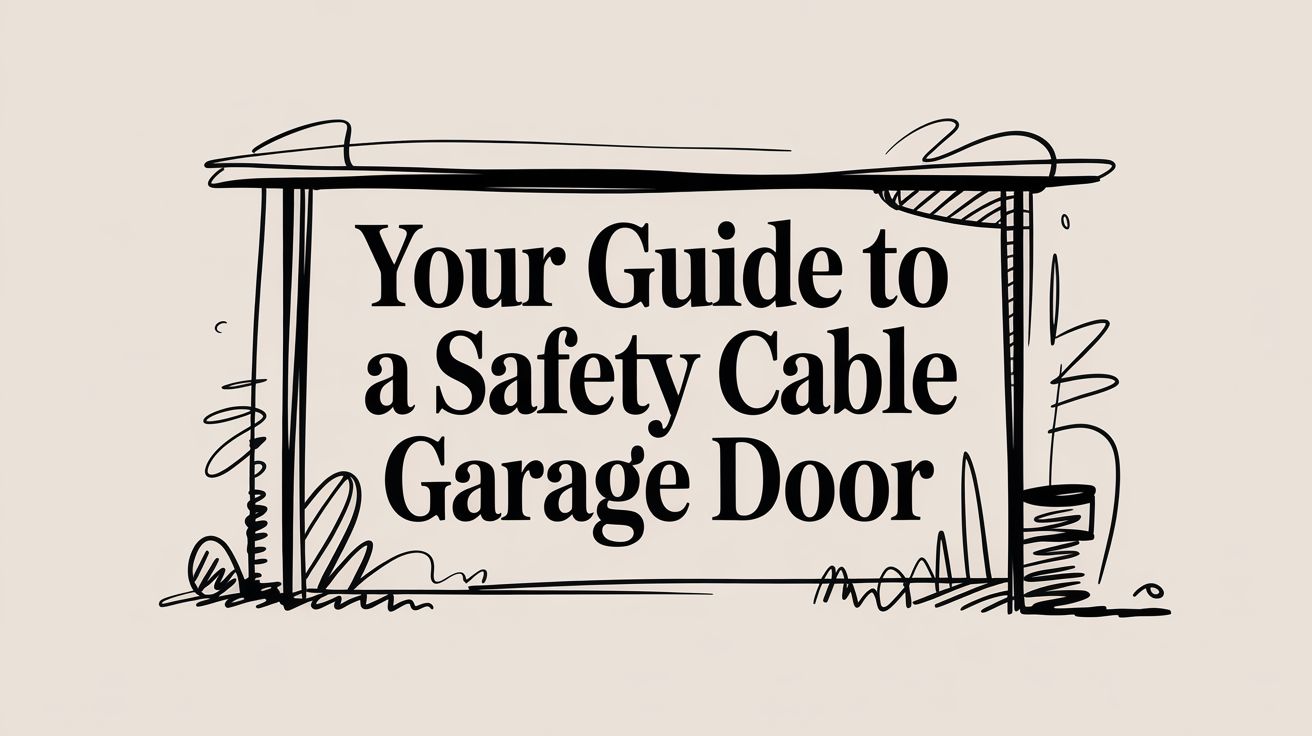
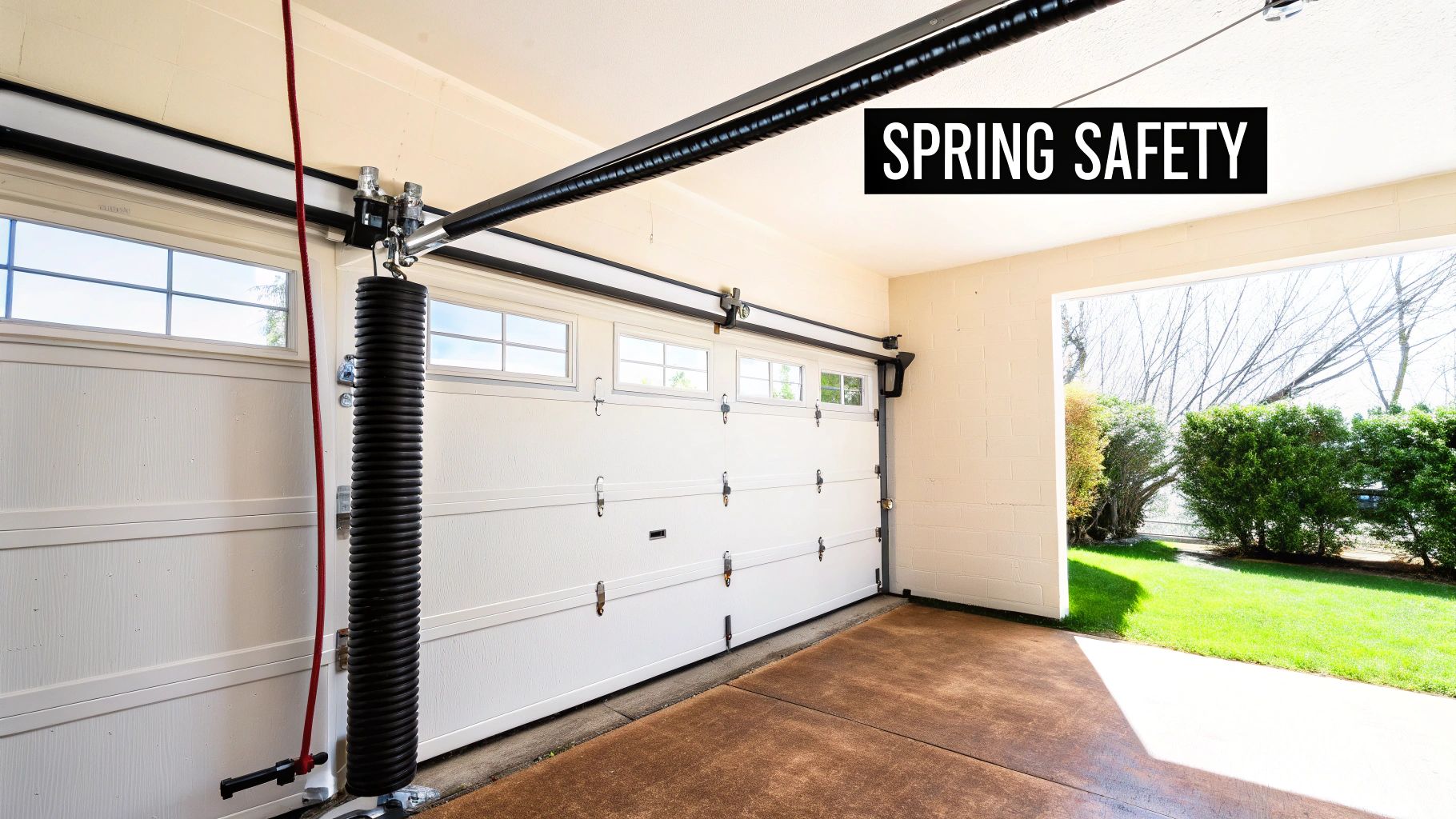
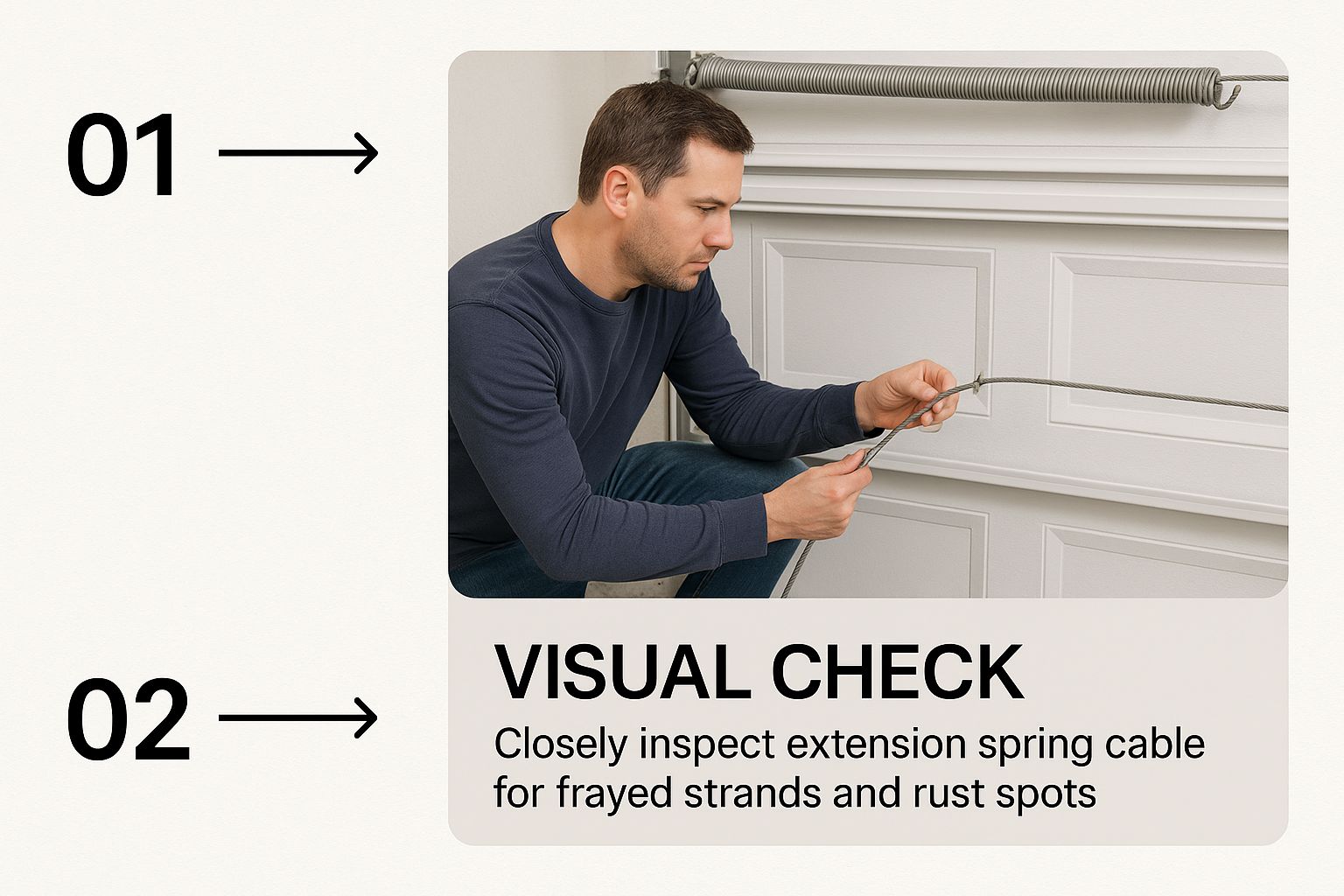
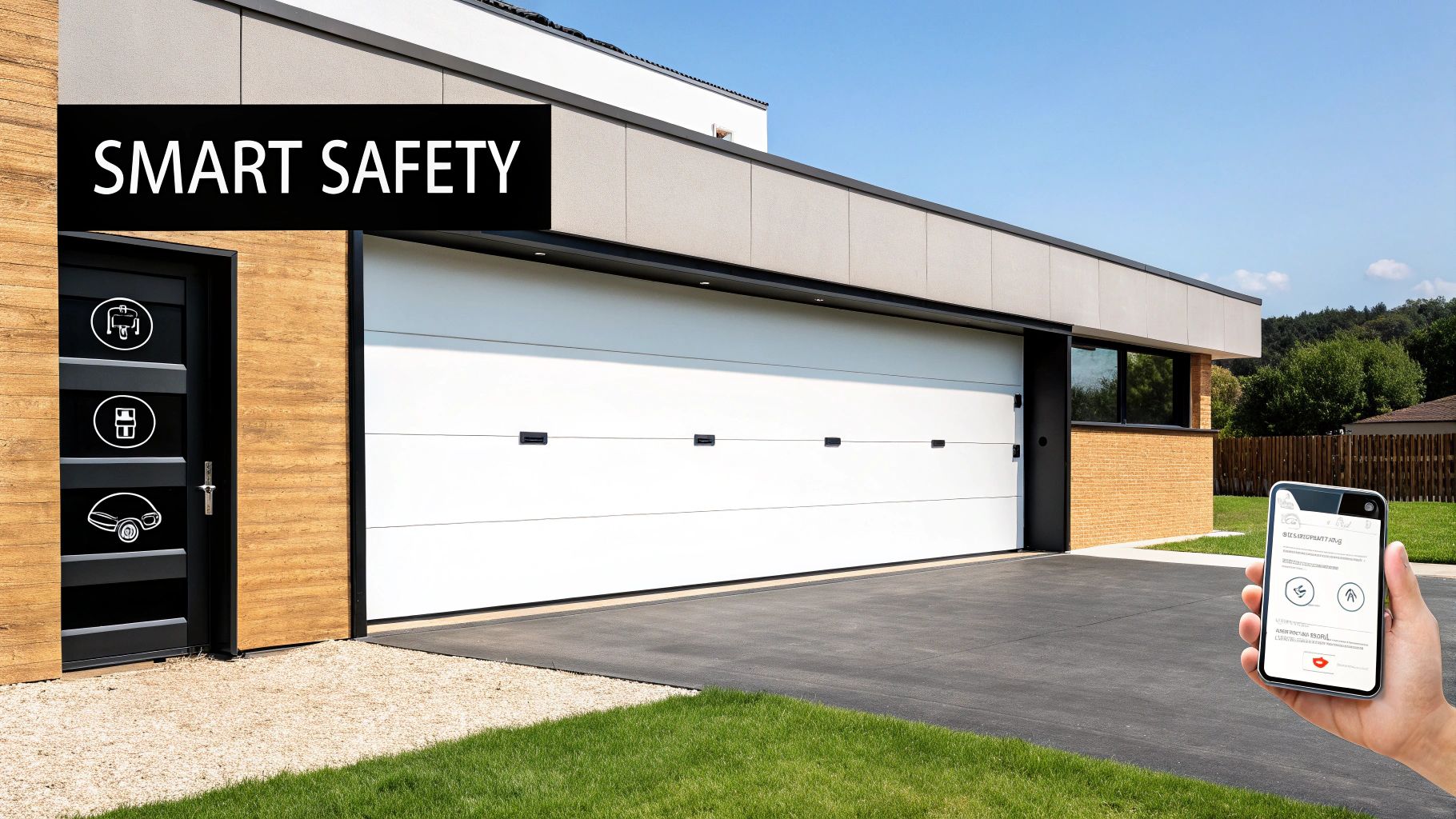

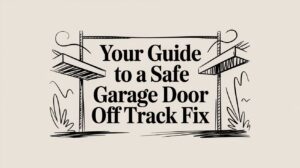


 (480) 548-0807
(480) 548-0807